Vodafone Business Report: Functional Units and Organizational Culture
VerifiedAdded on 2023/01/03
|10
|2016
|80
Report
AI Summary
This business report offers a detailed analysis of Vodafone's operations, focusing on the roles and interrelations of key departments such as HR, Marketing, and Finance. It examines the responsibilities of each functional unit, including recruitment, financial planning, and marketing strategies, highlighting their importance in achieving organizational goals. The report further explores Vodafone's organizational culture, leadership styles, and the impact of business ownership structures, including sole proprietorships, partnerships, and public limited companies. It also covers essential company documentation like P&L statements, balance sheets, and cash flow statements, providing a comprehensive overview of Vodafone's business practices and financial management. The report concludes by emphasizing the significance of effective communication and resource utilization for organizational success.
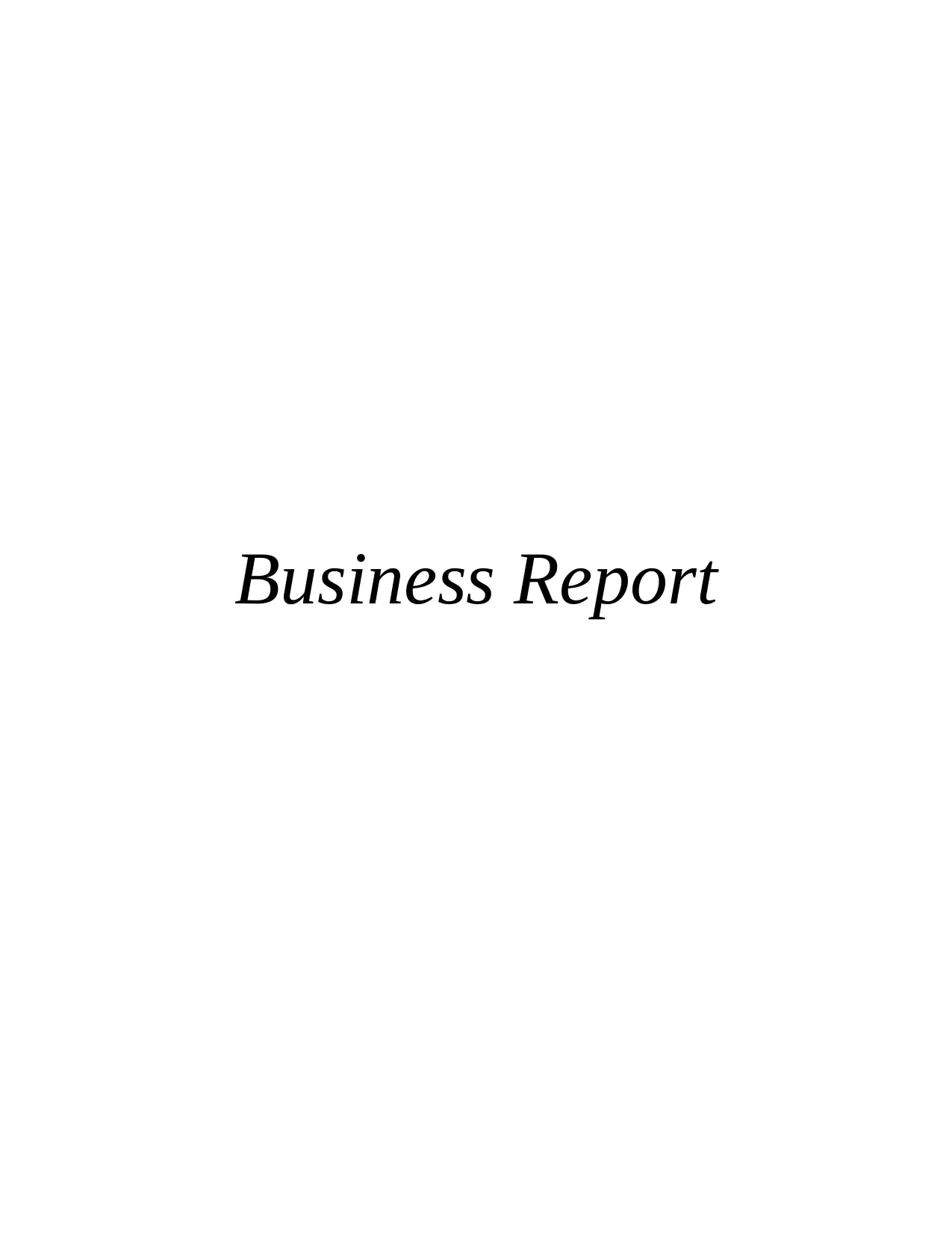
Business Report
Paraphrase This Document
Need a fresh take? Get an instant paraphrase of this document with our AI Paraphraser
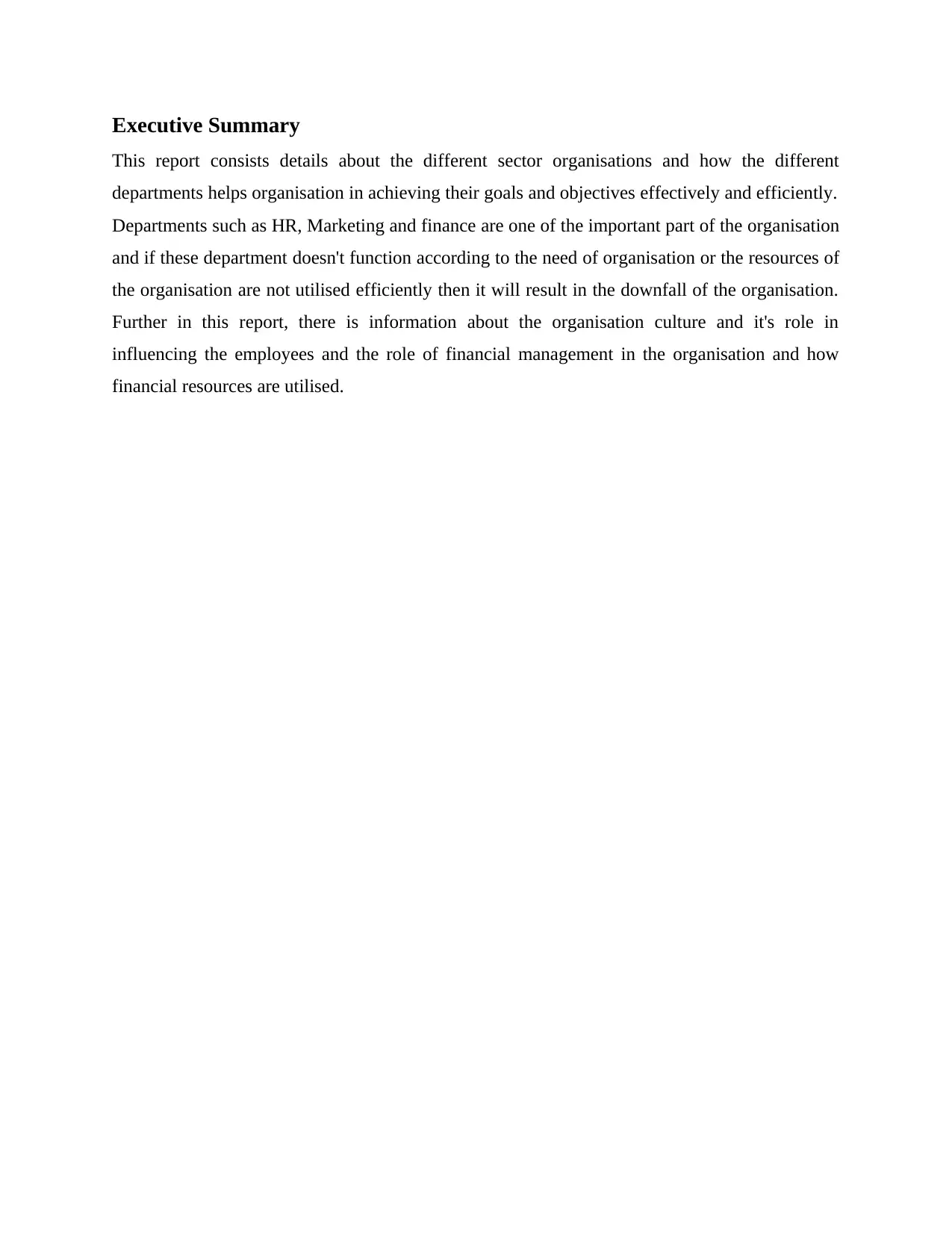
Executive Summary
This report consists details about the different sector organisations and how the different
departments helps organisation in achieving their goals and objectives effectively and efficiently.
Departments such as HR, Marketing and finance are one of the important part of the organisation
and if these department doesn't function according to the need of organisation or the resources of
the organisation are not utilised efficiently then it will result in the downfall of the organisation.
Further in this report, there is information about the organisation culture and it's role in
influencing the employees and the role of financial management in the organisation and how
financial resources are utilised.
This report consists details about the different sector organisations and how the different
departments helps organisation in achieving their goals and objectives effectively and efficiently.
Departments such as HR, Marketing and finance are one of the important part of the organisation
and if these department doesn't function according to the need of organisation or the resources of
the organisation are not utilised efficiently then it will result in the downfall of the organisation.
Further in this report, there is information about the organisation culture and it's role in
influencing the employees and the role of financial management in the organisation and how
financial resources are utilised.
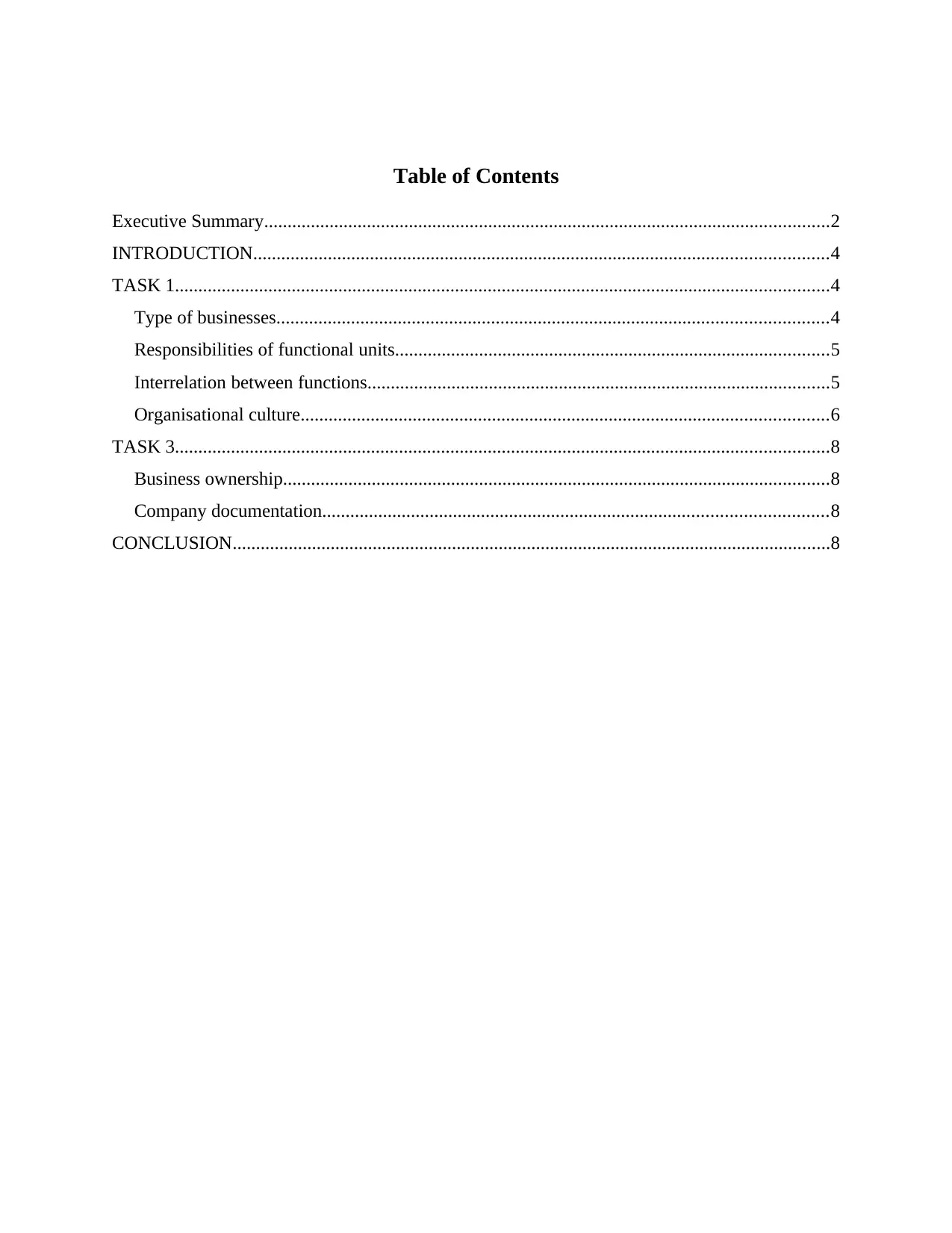
Table of Contents
Executive Summary.........................................................................................................................2
INTRODUCTION...........................................................................................................................4
TASK 1............................................................................................................................................4
Type of businesses......................................................................................................................4
Responsibilities of functional units.............................................................................................5
Interrelation between functions...................................................................................................5
Organisational culture.................................................................................................................6
TASK 3............................................................................................................................................8
Business ownership.....................................................................................................................8
Company documentation............................................................................................................8
CONCLUSION................................................................................................................................8
Executive Summary.........................................................................................................................2
INTRODUCTION...........................................................................................................................4
TASK 1............................................................................................................................................4
Type of businesses......................................................................................................................4
Responsibilities of functional units.............................................................................................5
Interrelation between functions...................................................................................................5
Organisational culture.................................................................................................................6
TASK 3............................................................................................................................................8
Business ownership.....................................................................................................................8
Company documentation............................................................................................................8
CONCLUSION................................................................................................................................8
⊘ This is a preview!⊘
Do you want full access?
Subscribe today to unlock all pages.

Trusted by 1+ million students worldwide
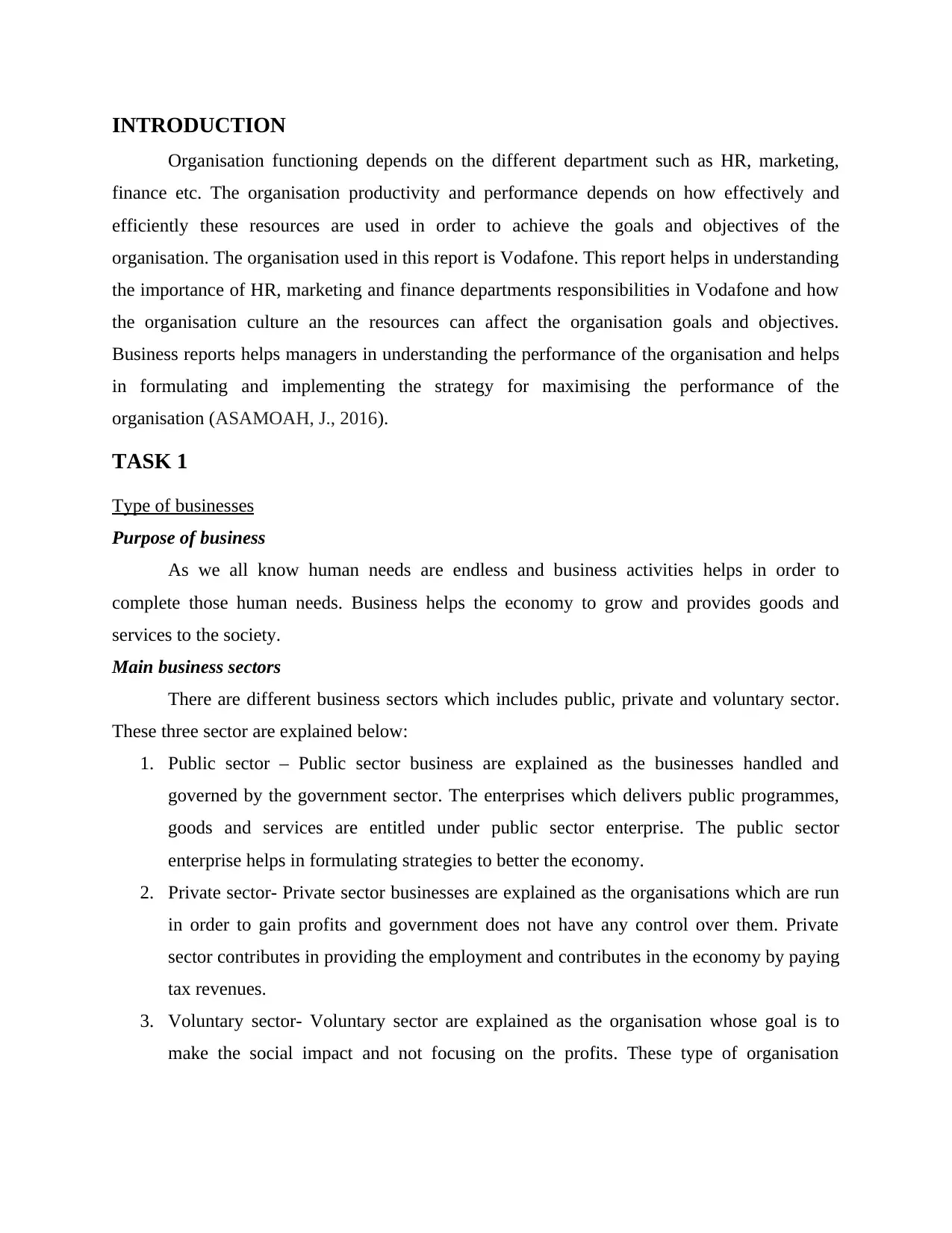
INTRODUCTION
Organisation functioning depends on the different department such as HR, marketing,
finance etc. The organisation productivity and performance depends on how effectively and
efficiently these resources are used in order to achieve the goals and objectives of the
organisation. The organisation used in this report is Vodafone. This report helps in understanding
the importance of HR, marketing and finance departments responsibilities in Vodafone and how
the organisation culture an the resources can affect the organisation goals and objectives.
Business reports helps managers in understanding the performance of the organisation and helps
in formulating and implementing the strategy for maximising the performance of the
organisation (ASAMOAH, J., 2016).
TASK 1
Type of businesses
Purpose of business
As we all know human needs are endless and business activities helps in order to
complete those human needs. Business helps the economy to grow and provides goods and
services to the society.
Main business sectors
There are different business sectors which includes public, private and voluntary sector.
These three sector are explained below:
1. Public sector – Public sector business are explained as the businesses handled and
governed by the government sector. The enterprises which delivers public programmes,
goods and services are entitled under public sector enterprise. The public sector
enterprise helps in formulating strategies to better the economy.
2. Private sector- Private sector businesses are explained as the organisations which are run
in order to gain profits and government does not have any control over them. Private
sector contributes in providing the employment and contributes in the economy by paying
tax revenues.
3. Voluntary sector- Voluntary sector are explained as the organisation whose goal is to
make the social impact and not focusing on the profits. These type of organisation
Organisation functioning depends on the different department such as HR, marketing,
finance etc. The organisation productivity and performance depends on how effectively and
efficiently these resources are used in order to achieve the goals and objectives of the
organisation. The organisation used in this report is Vodafone. This report helps in understanding
the importance of HR, marketing and finance departments responsibilities in Vodafone and how
the organisation culture an the resources can affect the organisation goals and objectives.
Business reports helps managers in understanding the performance of the organisation and helps
in formulating and implementing the strategy for maximising the performance of the
organisation (ASAMOAH, J., 2016).
TASK 1
Type of businesses
Purpose of business
As we all know human needs are endless and business activities helps in order to
complete those human needs. Business helps the economy to grow and provides goods and
services to the society.
Main business sectors
There are different business sectors which includes public, private and voluntary sector.
These three sector are explained below:
1. Public sector – Public sector business are explained as the businesses handled and
governed by the government sector. The enterprises which delivers public programmes,
goods and services are entitled under public sector enterprise. The public sector
enterprise helps in formulating strategies to better the economy.
2. Private sector- Private sector businesses are explained as the organisations which are run
in order to gain profits and government does not have any control over them. Private
sector contributes in providing the employment and contributes in the economy by paying
tax revenues.
3. Voluntary sector- Voluntary sector are explained as the organisation whose goal is to
make the social impact and not focusing on the profits. These type of organisation
Paraphrase This Document
Need a fresh take? Get an instant paraphrase of this document with our AI Paraphraser
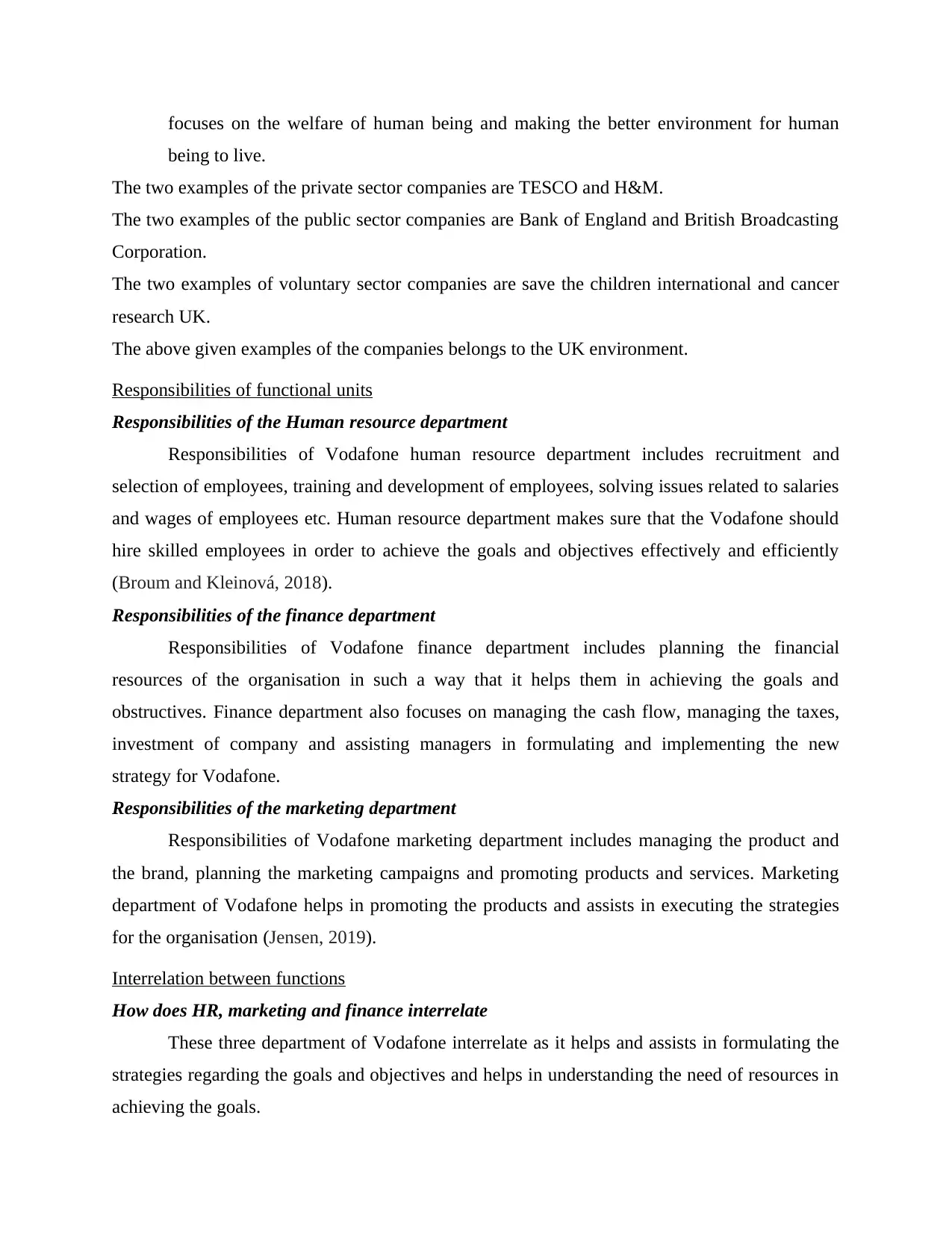
focuses on the welfare of human being and making the better environment for human
being to live.
The two examples of the private sector companies are TESCO and H&M.
The two examples of the public sector companies are Bank of England and British Broadcasting
Corporation.
The two examples of voluntary sector companies are save the children international and cancer
research UK.
The above given examples of the companies belongs to the UK environment.
Responsibilities of functional units
Responsibilities of the Human resource department
Responsibilities of Vodafone human resource department includes recruitment and
selection of employees, training and development of employees, solving issues related to salaries
and wages of employees etc. Human resource department makes sure that the Vodafone should
hire skilled employees in order to achieve the goals and objectives effectively and efficiently
(Broum and Kleinová, 2018).
Responsibilities of the finance department
Responsibilities of Vodafone finance department includes planning the financial
resources of the organisation in such a way that it helps them in achieving the goals and
obstructives. Finance department also focuses on managing the cash flow, managing the taxes,
investment of company and assisting managers in formulating and implementing the new
strategy for Vodafone.
Responsibilities of the marketing department
Responsibilities of Vodafone marketing department includes managing the product and
the brand, planning the marketing campaigns and promoting products and services. Marketing
department of Vodafone helps in promoting the products and assists in executing the strategies
for the organisation (Jensen, 2019).
Interrelation between functions
How does HR, marketing and finance interrelate
These three department of Vodafone interrelate as it helps and assists in formulating the
strategies regarding the goals and objectives and helps in understanding the need of resources in
achieving the goals.
being to live.
The two examples of the private sector companies are TESCO and H&M.
The two examples of the public sector companies are Bank of England and British Broadcasting
Corporation.
The two examples of voluntary sector companies are save the children international and cancer
research UK.
The above given examples of the companies belongs to the UK environment.
Responsibilities of functional units
Responsibilities of the Human resource department
Responsibilities of Vodafone human resource department includes recruitment and
selection of employees, training and development of employees, solving issues related to salaries
and wages of employees etc. Human resource department makes sure that the Vodafone should
hire skilled employees in order to achieve the goals and objectives effectively and efficiently
(Broum and Kleinová, 2018).
Responsibilities of the finance department
Responsibilities of Vodafone finance department includes planning the financial
resources of the organisation in such a way that it helps them in achieving the goals and
obstructives. Finance department also focuses on managing the cash flow, managing the taxes,
investment of company and assisting managers in formulating and implementing the new
strategy for Vodafone.
Responsibilities of the marketing department
Responsibilities of Vodafone marketing department includes managing the product and
the brand, planning the marketing campaigns and promoting products and services. Marketing
department of Vodafone helps in promoting the products and assists in executing the strategies
for the organisation (Jensen, 2019).
Interrelation between functions
How does HR, marketing and finance interrelate
These three department of Vodafone interrelate as it helps and assists in formulating the
strategies regarding the goals and objectives and helps in understanding the need of resources in
achieving the goals.
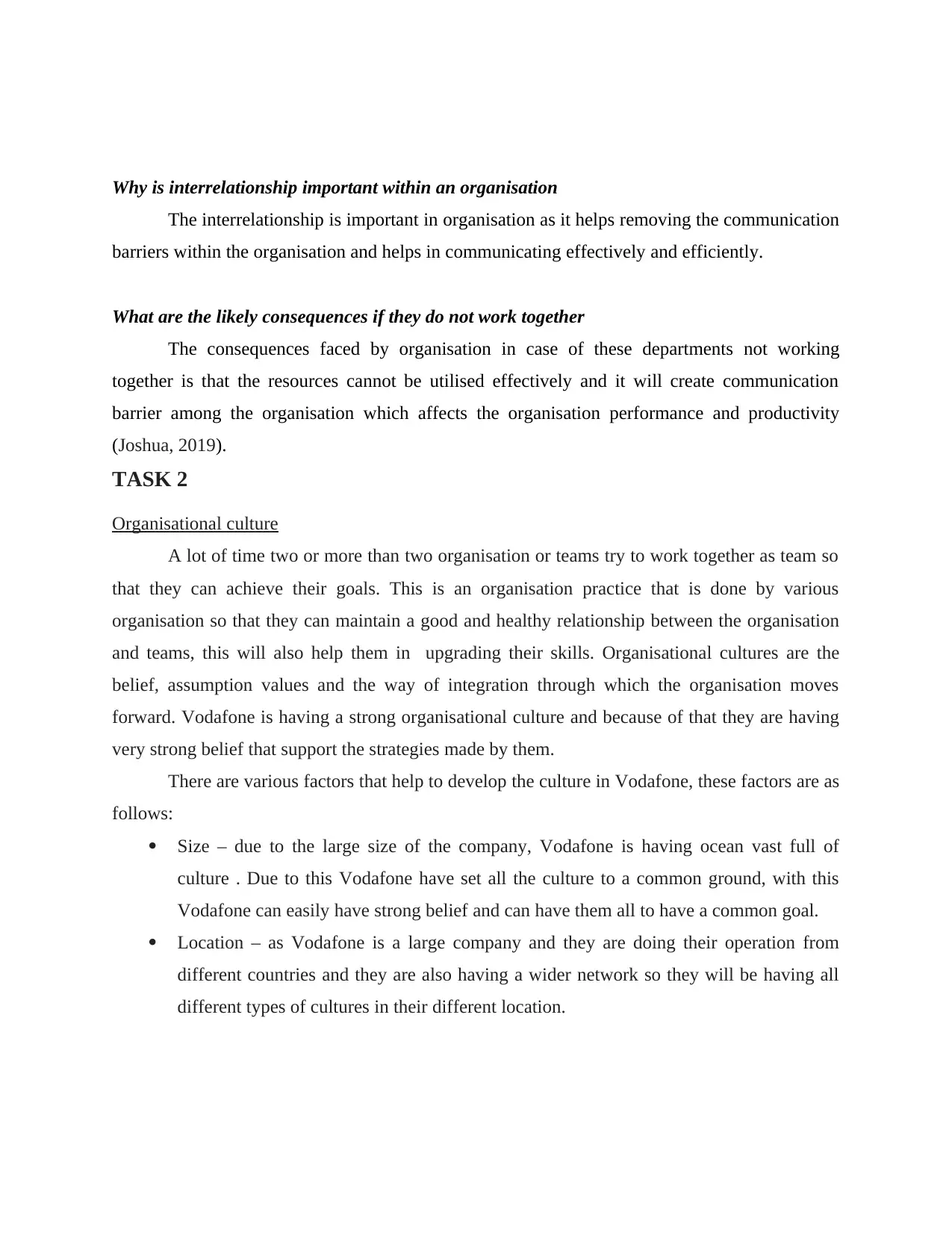
Why is interrelationship important within an organisation
The interrelationship is important in organisation as it helps removing the communication
barriers within the organisation and helps in communicating effectively and efficiently.
What are the likely consequences if they do not work together
The consequences faced by organisation in case of these departments not working
together is that the resources cannot be utilised effectively and it will create communication
barrier among the organisation which affects the organisation performance and productivity
(Joshua, 2019).
TASK 2
Organisational culture
A lot of time two or more than two organisation or teams try to work together as team so
that they can achieve their goals. This is an organisation practice that is done by various
organisation so that they can maintain a good and healthy relationship between the organisation
and teams, this will also help them in upgrading their skills. Organisational cultures are the
belief, assumption values and the way of integration through which the organisation moves
forward. Vodafone is having a strong organisational culture and because of that they are having
very strong belief that support the strategies made by them.
There are various factors that help to develop the culture in Vodafone, these factors are as
follows:
Size – due to the large size of the company, Vodafone is having ocean vast full of
culture . Due to this Vodafone have set all the culture to a common ground, with this
Vodafone can easily have strong belief and can have them all to have a common goal.
Location – as Vodafone is a large company and they are doing their operation from
different countries and they are also having a wider network so they will be having all
different types of cultures in their different location.
The interrelationship is important in organisation as it helps removing the communication
barriers within the organisation and helps in communicating effectively and efficiently.
What are the likely consequences if they do not work together
The consequences faced by organisation in case of these departments not working
together is that the resources cannot be utilised effectively and it will create communication
barrier among the organisation which affects the organisation performance and productivity
(Joshua, 2019).
TASK 2
Organisational culture
A lot of time two or more than two organisation or teams try to work together as team so
that they can achieve their goals. This is an organisation practice that is done by various
organisation so that they can maintain a good and healthy relationship between the organisation
and teams, this will also help them in upgrading their skills. Organisational cultures are the
belief, assumption values and the way of integration through which the organisation moves
forward. Vodafone is having a strong organisational culture and because of that they are having
very strong belief that support the strategies made by them.
There are various factors that help to develop the culture in Vodafone, these factors are as
follows:
Size – due to the large size of the company, Vodafone is having ocean vast full of
culture . Due to this Vodafone have set all the culture to a common ground, with this
Vodafone can easily have strong belief and can have them all to have a common goal.
Location – as Vodafone is a large company and they are doing their operation from
different countries and they are also having a wider network so they will be having all
different types of cultures in their different location.
⊘ This is a preview!⊘
Do you want full access?
Subscribe today to unlock all pages.

Trusted by 1+ million students worldwide
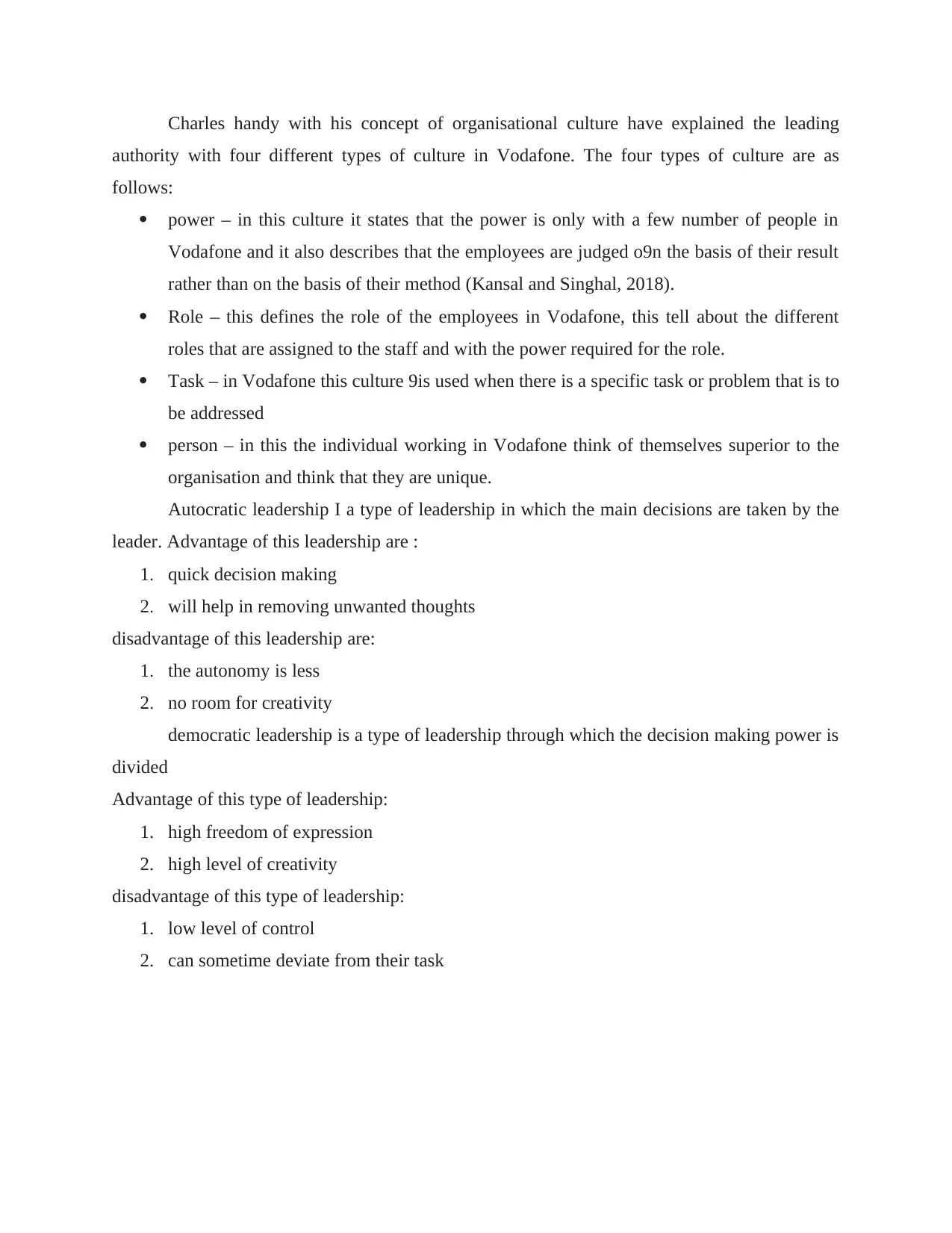
Charles handy with his concept of organisational culture have explained the leading
authority with four different types of culture in Vodafone. The four types of culture are as
follows:
power – in this culture it states that the power is only with a few number of people in
Vodafone and it also describes that the employees are judged o9n the basis of their result
rather than on the basis of their method (Kansal and Singhal, 2018).
Role – this defines the role of the employees in Vodafone, this tell about the different
roles that are assigned to the staff and with the power required for the role.
Task – in Vodafone this culture 9is used when there is a specific task or problem that is to
be addressed
person – in this the individual working in Vodafone think of themselves superior to the
organisation and think that they are unique.
Autocratic leadership I a type of leadership in which the main decisions are taken by the
leader. Advantage of this leadership are :
1. quick decision making
2. will help in removing unwanted thoughts
disadvantage of this leadership are:
1. the autonomy is less
2. no room for creativity
democratic leadership is a type of leadership through which the decision making power is
divided
Advantage of this type of leadership:
1. high freedom of expression
2. high level of creativity
disadvantage of this type of leadership:
1. low level of control
2. can sometime deviate from their task
authority with four different types of culture in Vodafone. The four types of culture are as
follows:
power – in this culture it states that the power is only with a few number of people in
Vodafone and it also describes that the employees are judged o9n the basis of their result
rather than on the basis of their method (Kansal and Singhal, 2018).
Role – this defines the role of the employees in Vodafone, this tell about the different
roles that are assigned to the staff and with the power required for the role.
Task – in Vodafone this culture 9is used when there is a specific task or problem that is to
be addressed
person – in this the individual working in Vodafone think of themselves superior to the
organisation and think that they are unique.
Autocratic leadership I a type of leadership in which the main decisions are taken by the
leader. Advantage of this leadership are :
1. quick decision making
2. will help in removing unwanted thoughts
disadvantage of this leadership are:
1. the autonomy is less
2. no room for creativity
democratic leadership is a type of leadership through which the decision making power is
divided
Advantage of this type of leadership:
1. high freedom of expression
2. high level of creativity
disadvantage of this type of leadership:
1. low level of control
2. can sometime deviate from their task
Paraphrase This Document
Need a fresh take? Get an instant paraphrase of this document with our AI Paraphraser
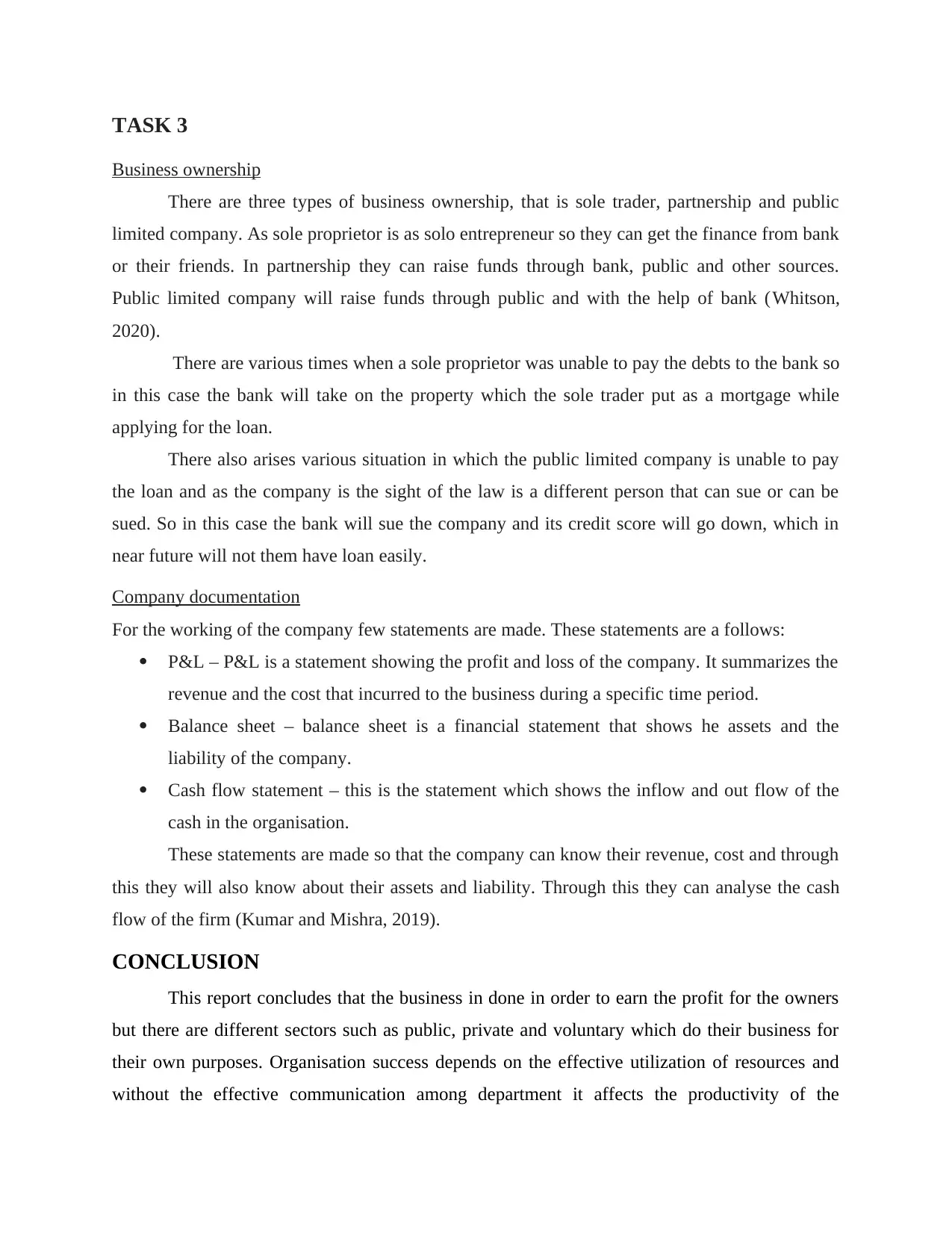
TASK 3
Business ownership
There are three types of business ownership, that is sole trader, partnership and public
limited company. As sole proprietor is as solo entrepreneur so they can get the finance from bank
or their friends. In partnership they can raise funds through bank, public and other sources.
Public limited company will raise funds through public and with the help of bank (Whitson,
2020).
There are various times when a sole proprietor was unable to pay the debts to the bank so
in this case the bank will take on the property which the sole trader put as a mortgage while
applying for the loan.
There also arises various situation in which the public limited company is unable to pay
the loan and as the company is the sight of the law is a different person that can sue or can be
sued. So in this case the bank will sue the company and its credit score will go down, which in
near future will not them have loan easily.
Company documentation
For the working of the company few statements are made. These statements are a follows:
P&L – P&L is a statement showing the profit and loss of the company. It summarizes the
revenue and the cost that incurred to the business during a specific time period.
Balance sheet – balance sheet is a financial statement that shows he assets and the
liability of the company.
Cash flow statement – this is the statement which shows the inflow and out flow of the
cash in the organisation.
These statements are made so that the company can know their revenue, cost and through
this they will also know about their assets and liability. Through this they can analyse the cash
flow of the firm (Kumar and Mishra, 2019).
CONCLUSION
This report concludes that the business in done in order to earn the profit for the owners
but there are different sectors such as public, private and voluntary which do their business for
their own purposes. Organisation success depends on the effective utilization of resources and
without the effective communication among department it affects the productivity of the
Business ownership
There are three types of business ownership, that is sole trader, partnership and public
limited company. As sole proprietor is as solo entrepreneur so they can get the finance from bank
or their friends. In partnership they can raise funds through bank, public and other sources.
Public limited company will raise funds through public and with the help of bank (Whitson,
2020).
There are various times when a sole proprietor was unable to pay the debts to the bank so
in this case the bank will take on the property which the sole trader put as a mortgage while
applying for the loan.
There also arises various situation in which the public limited company is unable to pay
the loan and as the company is the sight of the law is a different person that can sue or can be
sued. So in this case the bank will sue the company and its credit score will go down, which in
near future will not them have loan easily.
Company documentation
For the working of the company few statements are made. These statements are a follows:
P&L – P&L is a statement showing the profit and loss of the company. It summarizes the
revenue and the cost that incurred to the business during a specific time period.
Balance sheet – balance sheet is a financial statement that shows he assets and the
liability of the company.
Cash flow statement – this is the statement which shows the inflow and out flow of the
cash in the organisation.
These statements are made so that the company can know their revenue, cost and through
this they will also know about their assets and liability. Through this they can analyse the cash
flow of the firm (Kumar and Mishra, 2019).
CONCLUSION
This report concludes that the business in done in order to earn the profit for the owners
but there are different sectors such as public, private and voluntary which do their business for
their own purposes. Organisation success depends on the effective utilization of resources and
without the effective communication among department it affects the productivity of the
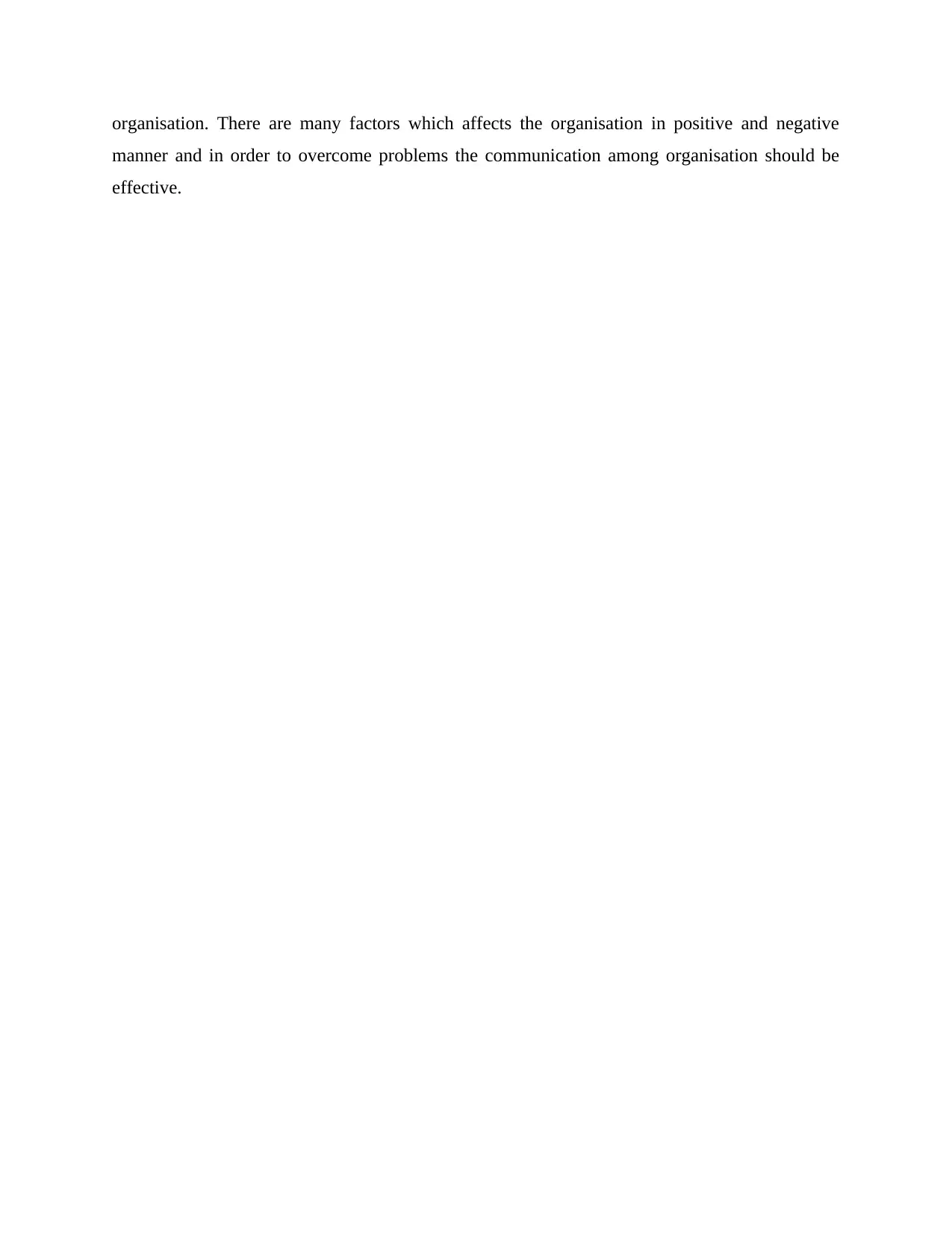
organisation. There are many factors which affects the organisation in positive and negative
manner and in order to overcome problems the communication among organisation should be
effective.
manner and in order to overcome problems the communication among organisation should be
effective.
⊘ This is a preview!⊘
Do you want full access?
Subscribe today to unlock all pages.

Trusted by 1+ million students worldwide
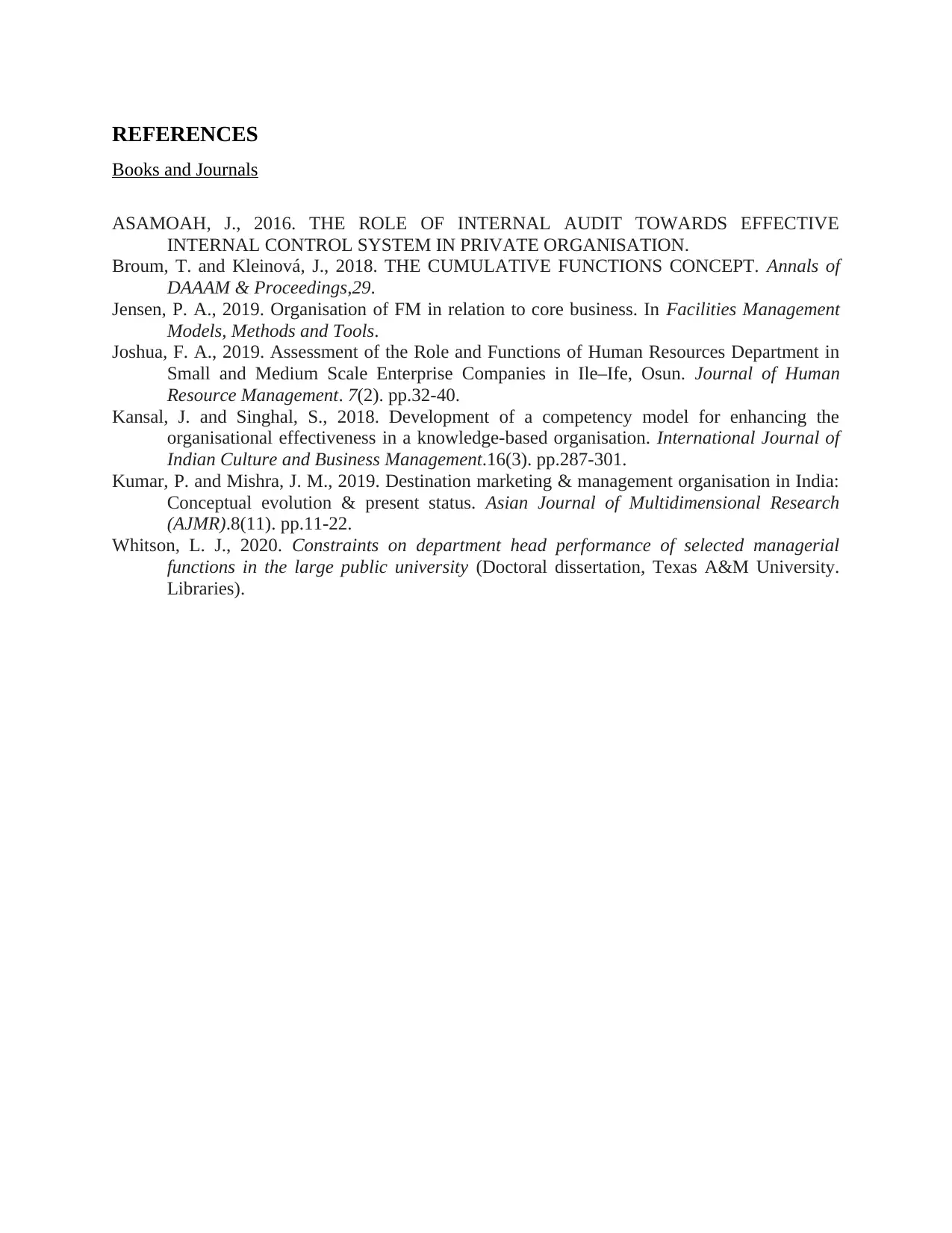
REFERENCES
Books and Journals
ASAMOAH, J., 2016. THE ROLE OF INTERNAL AUDIT TOWARDS EFFECTIVE
INTERNAL CONTROL SYSTEM IN PRIVATE ORGANISATION.
Broum, T. and Kleinová, J., 2018. THE CUMULATIVE FUNCTIONS CONCEPT. Annals of
DAAAM & Proceedings,29.
Jensen, P. A., 2019. Organisation of FM in relation to core business. In Facilities Management
Models, Methods and Tools.
Joshua, F. A., 2019. Assessment of the Role and Functions of Human Resources Department in
Small and Medium Scale Enterprise Companies in Ile–Ife, Osun. Journal of Human
Resource Management. 7(2). pp.32-40.
Kansal, J. and Singhal, S., 2018. Development of a competency model for enhancing the
organisational effectiveness in a knowledge-based organisation. International Journal of
Indian Culture and Business Management.16(3). pp.287-301.
Kumar, P. and Mishra, J. M., 2019. Destination marketing & management organisation in India:
Conceptual evolution & present status. Asian Journal of Multidimensional Research
(AJMR).8(11). pp.11-22.
Whitson, L. J., 2020. Constraints on department head performance of selected managerial
functions in the large public university (Doctoral dissertation, Texas A&M University.
Libraries).
Books and Journals
ASAMOAH, J., 2016. THE ROLE OF INTERNAL AUDIT TOWARDS EFFECTIVE
INTERNAL CONTROL SYSTEM IN PRIVATE ORGANISATION.
Broum, T. and Kleinová, J., 2018. THE CUMULATIVE FUNCTIONS CONCEPT. Annals of
DAAAM & Proceedings,29.
Jensen, P. A., 2019. Organisation of FM in relation to core business. In Facilities Management
Models, Methods and Tools.
Joshua, F. A., 2019. Assessment of the Role and Functions of Human Resources Department in
Small and Medium Scale Enterprise Companies in Ile–Ife, Osun. Journal of Human
Resource Management. 7(2). pp.32-40.
Kansal, J. and Singhal, S., 2018. Development of a competency model for enhancing the
organisational effectiveness in a knowledge-based organisation. International Journal of
Indian Culture and Business Management.16(3). pp.287-301.
Kumar, P. and Mishra, J. M., 2019. Destination marketing & management organisation in India:
Conceptual evolution & present status. Asian Journal of Multidimensional Research
(AJMR).8(11). pp.11-22.
Whitson, L. J., 2020. Constraints on department head performance of selected managerial
functions in the large public university (Doctoral dissertation, Texas A&M University.
Libraries).
1 out of 10
Related Documents
Your All-in-One AI-Powered Toolkit for Academic Success.
+13062052269
info@desklib.com
Available 24*7 on WhatsApp / Email
![[object Object]](/_next/static/media/star-bottom.7253800d.svg)
Unlock your academic potential
Copyright © 2020–2025 A2Z Services. All Rights Reserved. Developed and managed by ZUCOL.





